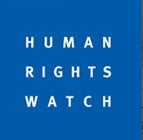 |
 |
|||||
|
|
|
|
|
|
|
|
|
|
|
|
|
|
|
|
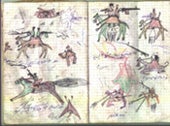 |
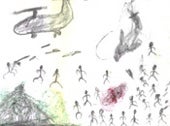 |
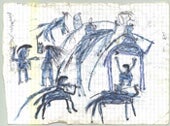 |
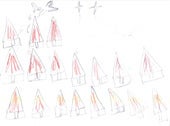 |
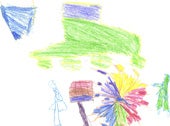 |
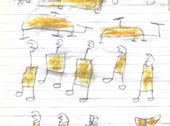 |
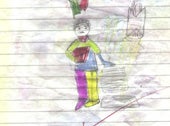 |
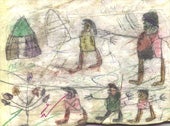 |
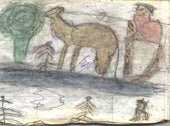 |
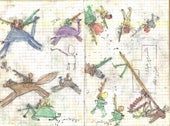 |
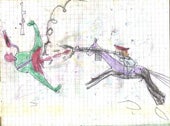 |
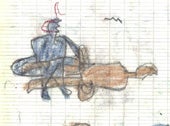 |
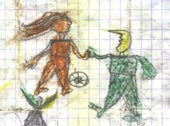 |
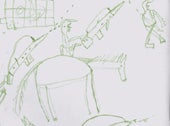 |
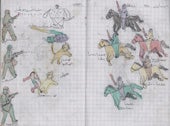 |
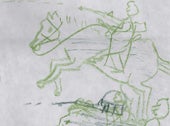 |
Musa, Age 15
Musa drew this picture of Antonovs bombing his village. His mother, father,
and brothers were all killed. His uncle told his family’s story:
“It was July 2003. At 6 a.m., the Sudanese government soldiers and Janjaweed came by car, tank, horse, camel, and on foot. There were three or four villages in our area, with a total population of maybe 1,200. Men, women, and children were killed—some by bombing, some by shooting. Some ran away. All our livestock, property, and food were taken. Then the village was burned: Some huts were set on fire by the Janjaweed. Later a plane came in the evening and burned the village. All the people who were still hiding in their huts—the old, the weak, the blind—were rounded up by the Janjaweed and shot. One hut was set on fire with someone still inside. I saw them with own eyes. I was then chased by Janjaweed but not caught. My family slept that night in the wadi [riverbed, or oasis]. We returned the next day. I counted around 80 or 90 bodies: men and children, a few women. We made a grave for all the people, 10 or 20 people to a grave, five or six graves in total.”
